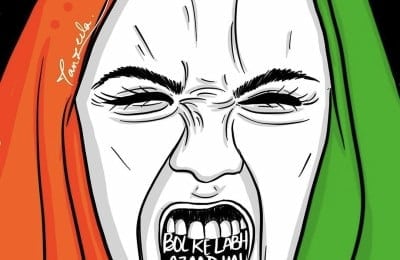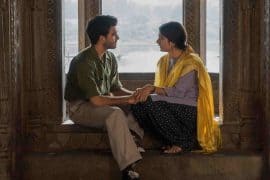In times like today, when the nation burns and dissent curbs, where does the agitation divert to? In times like today, when the nation burns and dissent curbs, we seek solace in art.
Protests. Music. Posters. Slogans. Paintings. Doodles. Protests. Years back these must have been random words stringed together, today, they are all part of a revolution to seek the truth and preserve the tarnishing ideals of our democracy. As more streets echo Hum Dekhenge, self-composed songs, witty slogans, posters, graffiti, social media too simultaneously creates content on all platforms.
Throughout history, art has remained a crucial part in evoking the idea of nationalism. The Swadeshi Movement was laid down on the ground rock foundation of art- from Raja Ravi Varma to Abanindranath Tagore, their legacy still thrives in the very image of ‘Bharat Mata’ which has been appropriated by the other side of the wing, time and again. Historically, the world has not been much of a pleasant place politically, to begin with, ravaged with wars, suppression, overturned democracy and conflict for power.

The Emergency 1975-77 amidst all the press restrictions paved way to one of the most iconic political cartoons which still finds a place in politics and journalism books. The Common Man by R.K. Laxman till date stands relevant in the sphere of political art. Keeping the art- ‘art’ aspect out of it, any content created by anyone is art- poetry, literature, paintings, everything is art.
Globally, too, graffiti, poetry and photography have rather been more dominant on social media. From Trump to Brexit, Syria to Hong Kong, protests have been largely dominated and propagated with art as a backbone.

Sharanya Vajjha, an amateur Artist and Political Science student says, “I really feel it’s a creative and articulate way to show someone that you disagree. Visuals are a far more effective medium in making a point, then why not make it instrumental in showing our resistance?”
Instagram today is a platform for everyone with a voice, with the rise in citizen journalism, all forms of art have emerged to be an influential way of criticising. After 15 December (Jamia Millia Islamia (JMI) Violence) and 5 January (Jawaharlal Nehru University (JNU) Violence), Instagram stories and Twitter, was flooded with creative posters, slogans, poetry, and songs.
Bol Ke Lab Azaad Hai Tere!, Azaadi, Hum Dekhenge!, Inquilab Zindabad!, dominated both the streets and sheets (literally). Idle backseat doodlers are leading protests and slogans with their art, brave images of JMI and JNU students fighting back, have become a digital symbol to show solidarity.
Who said art is for the weak-hearted? Walking the streets of Delhi today, every wall shouts “Jai Bhim” and “No CAA, No NRC”. Bangalore’s walls are painted in shades of the OG Shah-Modi’s colour. Kolkata is well, painted in red. Political art is silent, yet screams the most.
Disha Arya, an amateur photographer covering the protests all over Delhi says, “Photography as an art form lends you an eye on different perspectives which are not observable otherwise. I hope to inspire nationalism with what I click and wish for an urgent realisation against the ongoing fascism and curbing of dissent expressed.”
Modern urban politics have largely been incited and popularised to reach its maximum extent, solely due to creativity. People often perceive art to be apolitical, however as history has it, apolitocal art is just an oxymoron.
Feature Image Source: @afsaanehoor on Instagram
Anandi Sen





Comments are closed.